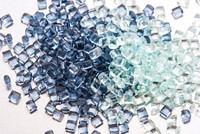Advertisement
Grab your lab coat. Let's get started
Welcome!
Welcome!
Create an account below to get 6 C&EN articles per month, receive newsletters and more - all free.
It seems this is your first time logging in online. Please enter the following information to continue.
As an ACS member you automatically get access to this site. All we need is few more details to create your reading experience.
Not you? Sign in with a different account.
Not you? Sign in with a different account.
ERROR 1
ERROR 1
ERROR 2
ERROR 2
ERROR 2
ERROR 2
ERROR 2
Password and Confirm password must match.
If you have an ACS member number, please enter it here so we can link this account to your membership. (optional)
ERROR 2
ACS values your privacy. By submitting your information, you are gaining access to C&EN and subscribing to our weekly newsletter. We use the information you provide to make your reading experience better, and we will never sell your data to third party members.
Business
Trinseo Makes Second Attempt To Go Public
Polymers producer formerly known as Styron files plans to pay down debt
by Alexander H. Tullo
March 21, 2014
| A version of this story appeared in
Volume 92, Issue 12
Trinseo is making a second attempt at becoming a public company. The polymers producer has filed a prospectus with the Securities & Exchange Commission (SEC) for an initial public offering (IPO) of stock worth $200 million.
Once known as Styron, Trinseo is a collection of polymer operations that Dow Chemical sold to the private equity firm Bain Capital in 2010. Trinseo had filed for a $400 million IPO in 2011 but withdrew its prospectus two years later.
Trinseo makes acrylonitrile-butadiene-styrene resins, synthetic rubber, latex, and polycarbonate. It is also partners with Chevron Phillips Chemical in the polystyrene joint venture Americas Styrenics. Trinseo lost $22 million on $5.3 billion in sales last year, largely because of financing costs and weakness in the polycarbonate business.
The company raised $1.3 billion in a junk-bond offering last year, leaving it with an ample level of high-interest-rate debt. When Trinseo issued the new bonds, Moody’s analyst John Rogers rated them below investment grade. He lowered the rating later in the year because of polymer price volatility and weak demand.
In its SEC filing, Trinseo says it will use the proceeds from the stock offering to pay down debt.
The company is trying to focus on its latex and synthetic rubber businesses, which have been more profitable than styrenics or polycarbonate. It recently acquired rubber capacity from Japan’s JSR at a plant the companies shared in Germany. It is also expanding latex capacity in China. “I am cautiously optimistic for a better 2014,” CEO Christopher D. Pappas said earlier this month.



Join the conversation
Contact the reporter
Submit a Letter to the Editor for publication
Engage with us on Twitter